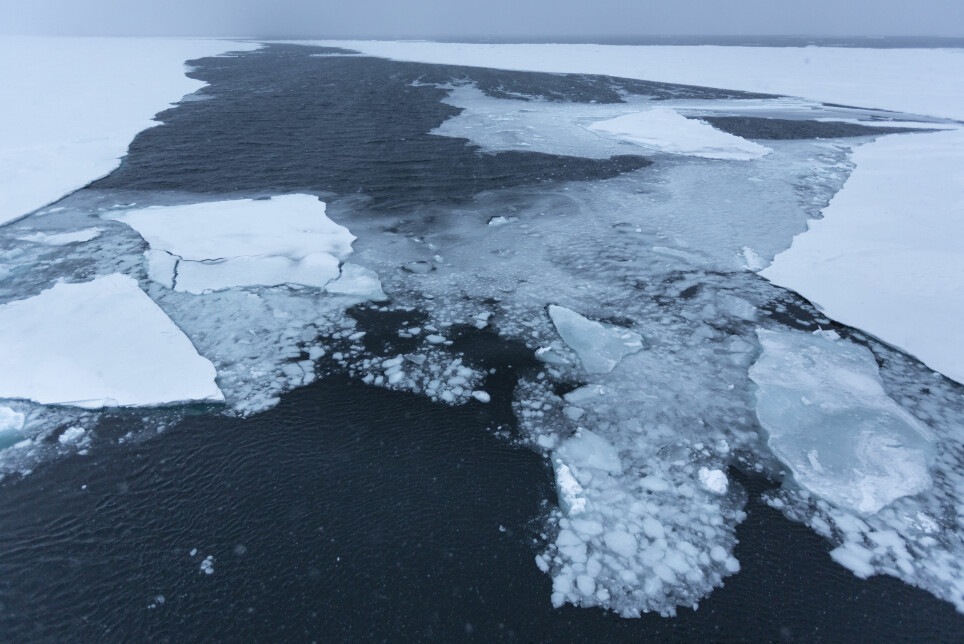THIS ARTICLE/PRESS RELEASE IS PAID FOR AND PRESENTED BY UiT The Arctic University of Norway - read more

Detecting mineral oil slicks in ice covered seas from space
The thinning and retreat of the arctic sea ice has led to increased human presence in Arctic seas. Marine traffic is most likely to increase in the future, as are activities such as fishing, oil and mineral exploitation. All these activities increase the risk for oil spills in ice-covered waters. Yet, the technology used to monitor for marine oil spills in the World’s oceans is not yet applicable for ice-covered seas. A new study presents a first approach to overcome this limitation.
From whales and the challenge to detect oil spills
Tooth whales echolocate, meaning that they send out loud clicking sounds via special nasal structures and listen for echoes bouncing off objects. That helps the whales to navigate and to find food.
Humans use the backscatter of sound waves but also from visible light and longer radio waves for navigation and investigation of the world. Airborne and spaceborne radars surveille our planet by sending and receiving centimeter long waves. This technology can see through clouds and can image the Arctic even during the polar night.
This technology has been widely used to detect and monitor spills of mineral oil at sea. Different methods have been applied to distinguish clean and oil-infested sea surfaces with help of radar signals, many of which use the shape of the oil slicks. In ice-covered waters, this approach gives rise to two problems.
Firstly, ice floes and leads alter the shape of oil slicks, making it impossible to apply established protocols. Secondly, radars have problems distinguishing between newly formed sea ice and oil at sea.

From wiggling waves and 3D glasses
In a recent study, researchers from UiT in collaboration with the NASA Jet Propulsion Laboratory examined a new method to discriminate oil slicks and newly formed sea ice using synthetic aperture radar (SAR) imagery.
Their approach takes advantage of the fact that radio waves wiggle up and down, and left and right, as they travel. The wiggling of the waves is called polarization, a phenomenon which 3D glasses use to give us the illusion of a three-dimensional space.
The polarization of radar signals can also be used to deduct information about the properties of an object, as the objects properties will influence the polarization of the waves’ backscatter. Using radars with multiple frequencies increases the information deductible from the polarized reflections.
Polarization reliably separates oil slicks and newly formed sea ice
To check if multifrequency polarimetric information from SAR images could separate between oil slicks and newly formed sea ice analyzed SAR images taken during the OOW2015 exercise in the North Sea, and an oil seep in the Gulf of Mexico in 2016, which generated images of oil slicks in ice-free waters.
They compared those to SAR images of newly formed sea ice from the Beaufort-Chukchi Sea and the Barents Sea. The latter was in part generated during the Nansen Legacy seasonal cruise Q4 in December 2019.
The comparison demonstrated that oil slicks and new ice have different polarimetric backscatter, and consequently, the difference in polarization can be used to distinguish between these two different surfaces.
Reference:
A. Malin Johansson et.al.: Can mineral oil slicks be distinguished from newly formed sea ice using synthetic aperture radar?, IEEE Journal of Selected Topics in Applied Earth Observations and Remote Sensing, 2020.
See more content from UiT:
-
Diabetes medicine without needles? Researchers are now testing edible insulin
-
Marine heatwaves do not affect fish
-
Probiotics are beneficial for preterm babies
-
This is how the coach can get football players to perform better
-
New volcano discovered in the Barents Sea
-
What makes an octopus so intelligent?





































